What Is A Good Starter Camera For Photography
Best photographic camera for beginners 2022: superlative starter cameras for photography and filmmaking
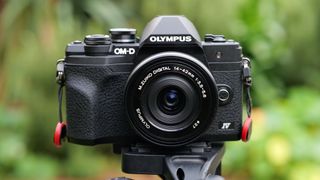
Welcome to our guide to the best beginner cameras you can buy. Smartphones may have come up a long way in the last few years, only dedicated cameras withal have a lot to offering the learner photographer, including larger sensors, superior lenses and more creative control. Whether you're looking to improve your snaps, video skills or a bit of both, nosotros've rounded up all of the finest beginner-friendly options in this handy guide. (If you lot're particularly keen on DSLRs, then bank check out our carve up guide to the all-time beginner DSLRs ).
Right at present, we think the all-time beginner photographic camera is the Fujifilm 10-T200. This versatile mirrorless camera can shoot excellent photos thanks to its tried-and-tested APS-C sensor, and has a touchscreen interface that'll exist comfortably familiar to those coming from smartphones. With physical dials and full transmission controls, information technology'll also abound with you as y'all learn more virtually photography.
But the X-T200 isn't the merely option you should consider. If live-streaming is your principal focus, so the contempo Panasonic GH5 Marker II is the finest selection around. Those looking for something small to shoot a mix of vlogs and photos should also consider the Sony ZV-i. And if your heart's set on a DSLR, then the Nikon D3500 withal offers excellent value and a swell shooting experience thanks to its handy 'Guide Mode'.
While our regularly updated guide mostly contains recent models, we have also included some older ones that continue to offering cracking value. For example, even though the Fujifilm X-T30 Marking II is now available, we've included its predecessor because that model offers more than enough for most beginners for a lower toll. Not sure where to showtime? Cheque out our ownership tips and pointers further down beneath this listing.

The all-time beginner cameras in 2022:
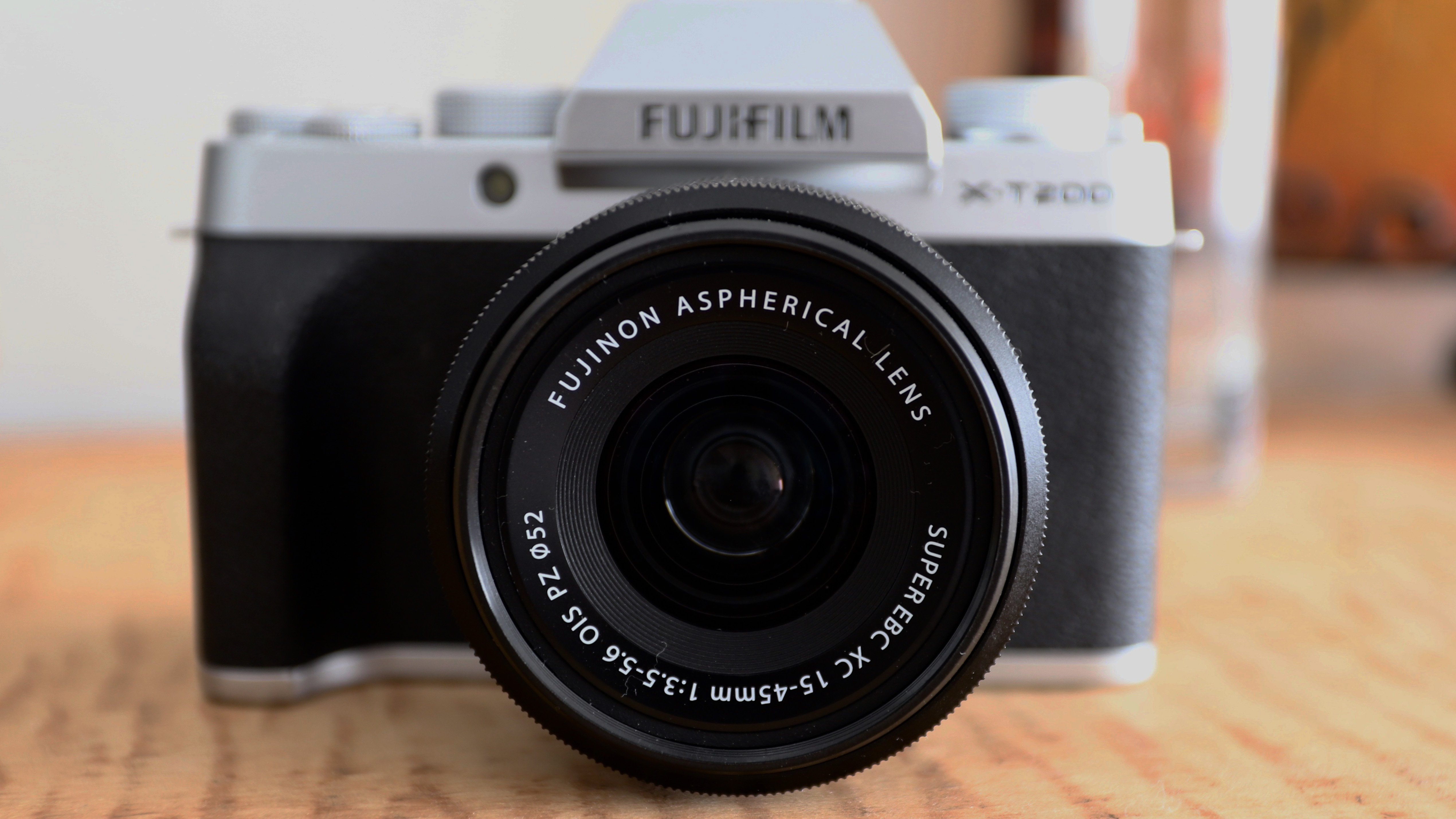
Bridging the gap between smartphone photography and the world of interchangeable lens cameras, the Fujifilm X-T200 provides a great mix of physical controls and touchscreen functionality. As well every bit a decent viewfinder, which makes it easy to have pictures in bright sunlight, the Ten-T200 has a 3.5in display, which is the largest in its form. This display can be flipped out to face forrad, perfect for selfies and vlogging.
Having access to settings via a touchscreen keeps things familiar for people moving over from a smartphone. But this camera also offers physical controls, including three dials and joystick, for those confident enough to explore them. Information technology offers a simple-to-use layout and has helpful instructions displayed on the screen to explain menu items inside the settings.
Fujifilm mirrorless cameras are famed for producing incredible JPEG images in-camera that don't need whatever editing. This is thanks in part to the inclusion of a range of award-winning film simulation modes, that replicate the wait and feel of classic motion picture. Move over social media filters!
If y'all're looking for a meaning footstep-up from a smartphone that offers decent photo performance with video capabilities, the X-T200 is a strong choice. As an entry-level photographic camera, the Ten-T200 comes with the Fujinon XC15-45mm f/3.v-5.6 lens, which is a great everyday lens for street portraits and travel. It also offers lens stabilization to aid avoid blurry images in low light.
The 10-T200 also gives you access to a broad range of incredible Fujfilm lenses. This makes it an ideal camera choice if you're gear up to invest in a organisation tin can grow with your skills.
- Read our in-depth Fujifilm X-T200 review

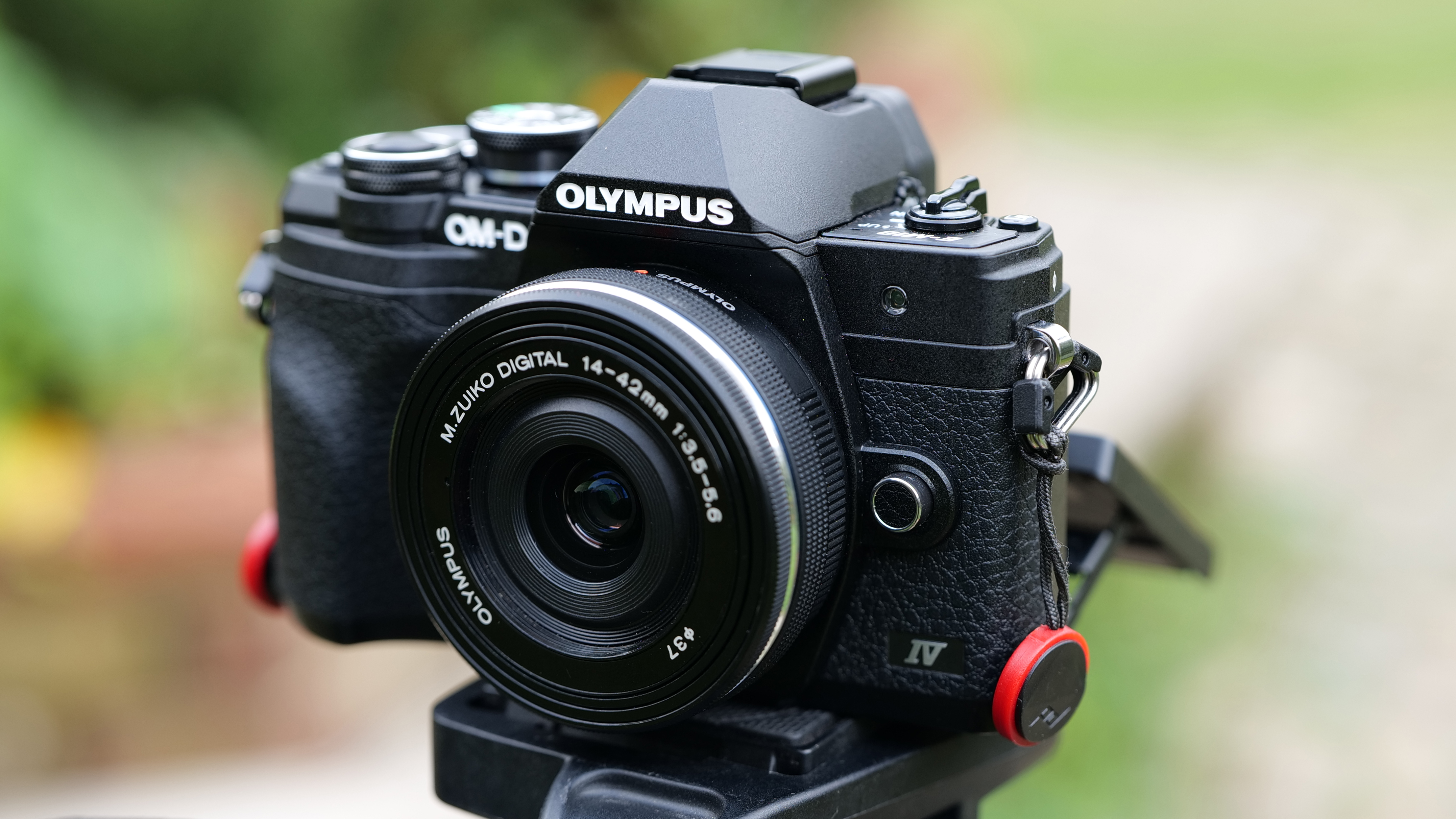
If you're looking for a simple, compact mirrorless camera that consistently captures attractive images, the OM-D East-M10 Mark Four definitely deserves a spot on your shortlist.
It might lack some of the more avant-garde features of its pricier rivals – including microphone and USB-C ports – but information technology does a brilliant job equally a stills camera. Designed primarily for smartphone switchers, its ergonomic grip, outgoing push button layout and handy flip-down touchscreen requite it good versatility, without cluttering the classically styled shell.
An Advanced Photo mode makes information technology piece of cake to accept a become at avant-garde techniques such every bit long exposures, while the in-body image stabilization system – borrowed from the flagship E-M1 – is superb. The sensor resolution is decent at twenty.3MP and, because it'south a Micro Four Thirds camera, it has 1 of the widest lens catalogues on the market. It might not grab headlines, but the Mark 4 is a fantastic first photographic camera for beginners.
- Read our in-depth Olympus OM-D East-M10 Mark IV review


It's at present been succeeded by the Fujifilm Ten-T30 Mark II, but beginners looking to save a little coin volition exist just fine with the original 10-T30. The 2 models are virtually identical, with the Mark Two model bringing a college-resolution LCD screen, a 1080/240p video way and slightly improved autofocus. But otherwise, the X-T30 is the same camera – and it remains i of the best ways for beginners to larn to photography, cheers to its retro dials and compact size.
Essentially a pared-downward version of Fujifilm's X-T3 model, the Ten-T30 is one of the more advanced cameras on our list. With the X-T30 y'all become a host of fantastic specs, including a well-performing 26.1MP back-illuminated 10-Trans APS-C sensor, 4K DCI and UHD video recording up to 30p, as well equally the flexibility to shoot at up to 30fps. In short, it'southward a superb picayune all-rounder for those who are but finding their feet, because it can shoot a picayune chip of every subject.
- Read our in-depth Fujifilm X-T30 review

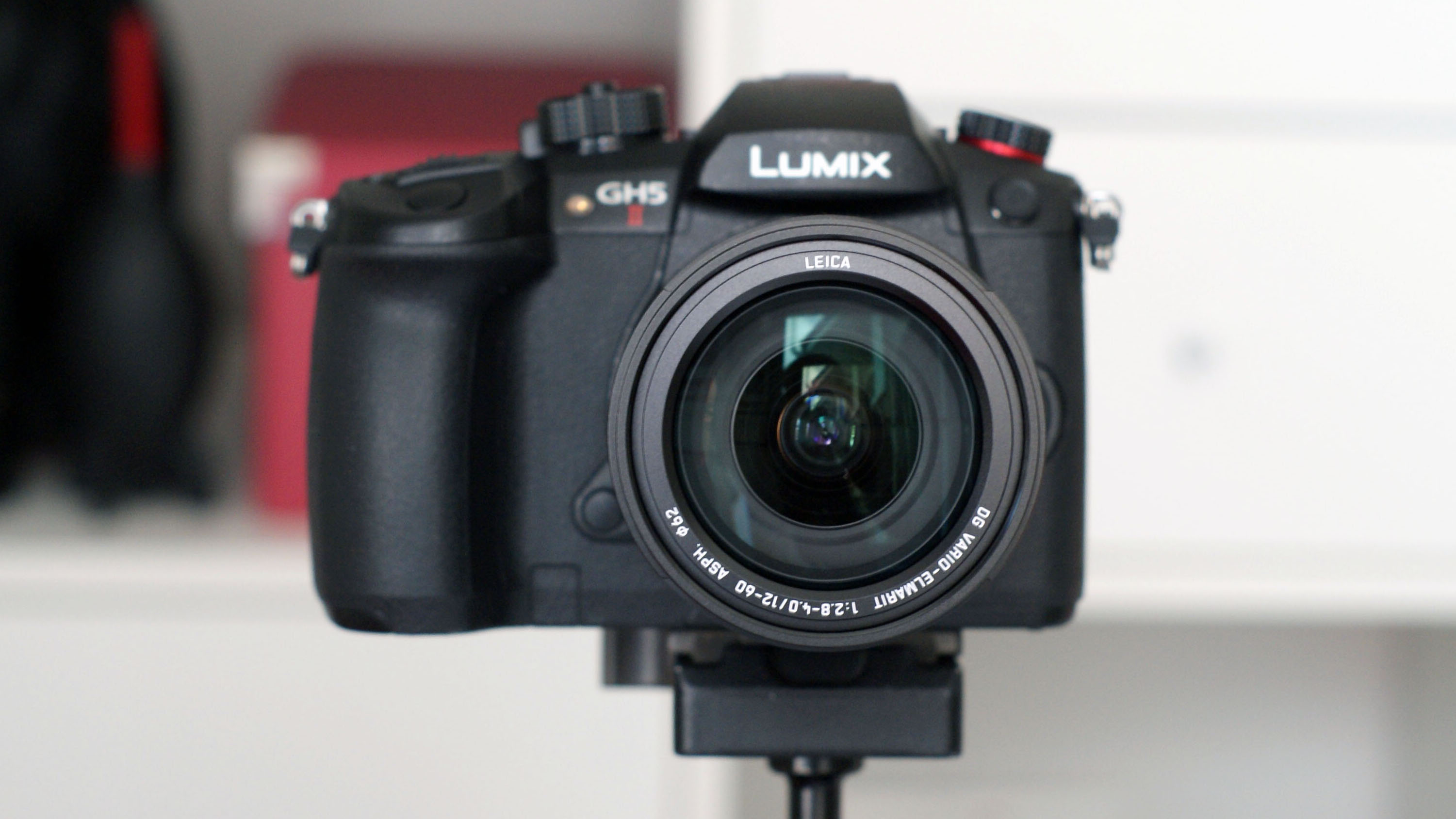
The Panasonic GH6 may withal exist en route for serious videographers, merely for beginners and those looking to go into alive-streaming, the GH5 Marker II is a unique mirrorless selection that'southward the best of its kind. Its main calling card are built-in wireless live streaming capabilities, which you won't discover on many other mirrorless cameras. These take also just been joined past impressive 4K alive-streaming powers, thank you to a recent firmware update.
The GH5's Marking II's all-round video talents are stiff also, with the selection of recording ten-chip 4:2:2 footage internally or externally, plus a huge diversity of frame-rate options and various anamorphic video resolutions supported. It's a dandy way to acquire your video craft, but offers plenty of room to grow as well, with Panasonic'south flat V-Log profile serving up 12 stops of dynamic range to fiddle with in postal service-product.
Put all of this in a pocket-sized, lightweight and weatherproof torso with impressive in-body paradigm stabilization (IBIS) and you accept a fine video photographic camera that'southward merely every bit comfortable out on the road as it is beingness your YouTube or Twitch streaming workhorse.
- Read our in-depth Panasonic GH5 Mark 2 review


At its heart, the Nikon Z fc is the same as the Nikon Z50. That's skillful news, because its 20.9MP APS-C sensor and hybrid autofocus organisation are capable of producing detailed stills and solid 4K footage at 30fps. What sets the Z fc apart is its trunk, which has been designed in accolade of the classic Nikon FM2. Information technology has broadly the aforementioned dimensions as its counterpart antecedent and no shortage of retro manner to suit its Eighties origins.
Those thoughtful throwback cues mean the Nikon Z fc is a distinctive camera. It's also even improve for beginners than the Z50, thanks to a vari-angle display which makes artistic framing more flexible. It's not weather-sealed (non that you'd want to risk using such a stunning photographic camera in choppy conditions) and it also lacks the deep grip of the Z50. Merely it does feature a useful range of physical controls for getting to grips with manual settings, including defended exposure, ISO and shutter speed dials. It's also relatively affordable, fifty-fifty if there are limited native lenses at the moment – although the matching Nikkor Z 28mm f/two.eight SE lens is a great fixed focal length option for first-timers.
- Read our in-depth Nikon Z fc review

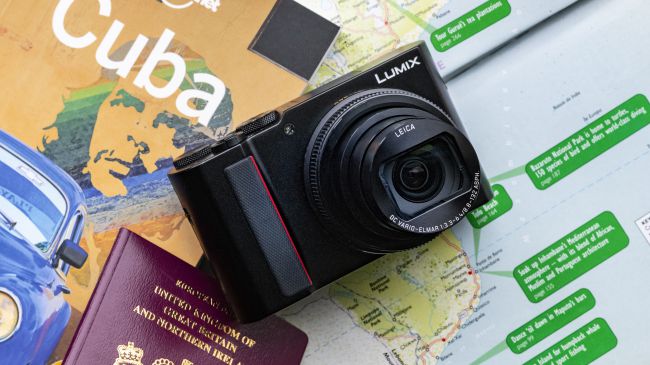
If you lot'd rather acquire your photographic craft on a compact camera, rather a larger mirrorless model or DSLR, then the Lumix ZS200 (or TZ200 as it's known outside the The states) is the best option around. It might look similar a point-and-shoot camera, but the ZS200 combines a super-versatile lens (with 24-360mm focal length), 1-inch sensor and a wide range of manual controls for total creative control.
Thanks to control dials on the top and around the barrel of the lens, yous can quickly adjust settings similar discontinuity or shutter speed while out on the street. And while the electronic viewfinder may be small, it offers a solid 2.33-million dot resolution and is some other large benefaction over telephone cameras. Throw in 4K video and an intuitive touchscreen interface, and the ZS200 makes a fine beginner camera for those who manual controls in something that'southward small and discreet.
- Read our in-depth Panasonic Lumix ZS200 / TZ200 review

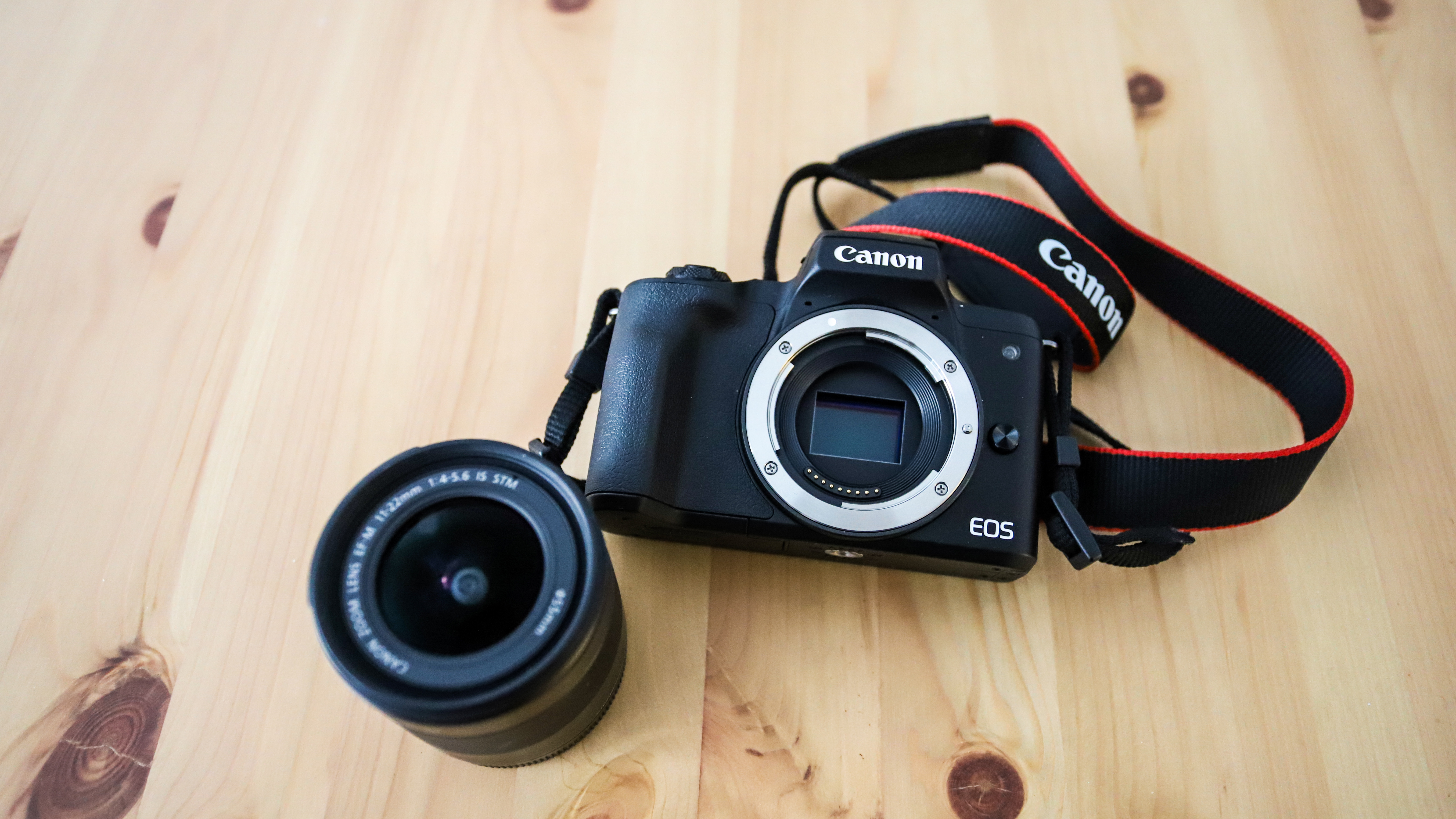
Although Canon seems to be primarily concentrating on its full-frame R line, the more than beginner-friendly, APS-C, EOS G range continues to be a big depict for those less experienced. The original Catechism EOS M50 made our list, and has only recently been replaced past the Mark II, which is a very minor upgrade on its predecessor.
That means you get a elementary user interface which offers helpful explanations and suggestions inside the settings menu. Once y'all've got to grips a bit more with the camera, you tin can even disable it. Although light on physical controls, there's only plenty here to keep information technology on right side of pleasingly ergonomic.
Catechism'south honour-winning Dual Pixel AF comes in handy for focusing on moving subjects quickly and consistently, such equally fast-moving action and fidgety pets. The EF-K fifteen-45mm kit lens which is bundled as standard with the M50 Mark Two is decent enough for every twenty-four hour period use, but should you find you lot desire to expand your lens collection, this is where the M-series cameras autumn down compared to the competition. That said y'all can use a plethora of DSLR lenses via an adapter, so at that place'southward a bit of a workaround in that location.
If video is your primary business, you lot may as well feel a little fleck let downwards by the M50 Mark II, peculiarly equally Canon hasn't upgraded this area since the previous iteration. The camera may be capable of recording 4K, but with such a heavy ingather applied, it'south nearly unusable. If stills is your main priority though, this won't be such a bargain-breaker.
- Read our in-depth Canon EOS M50 Mark Two review

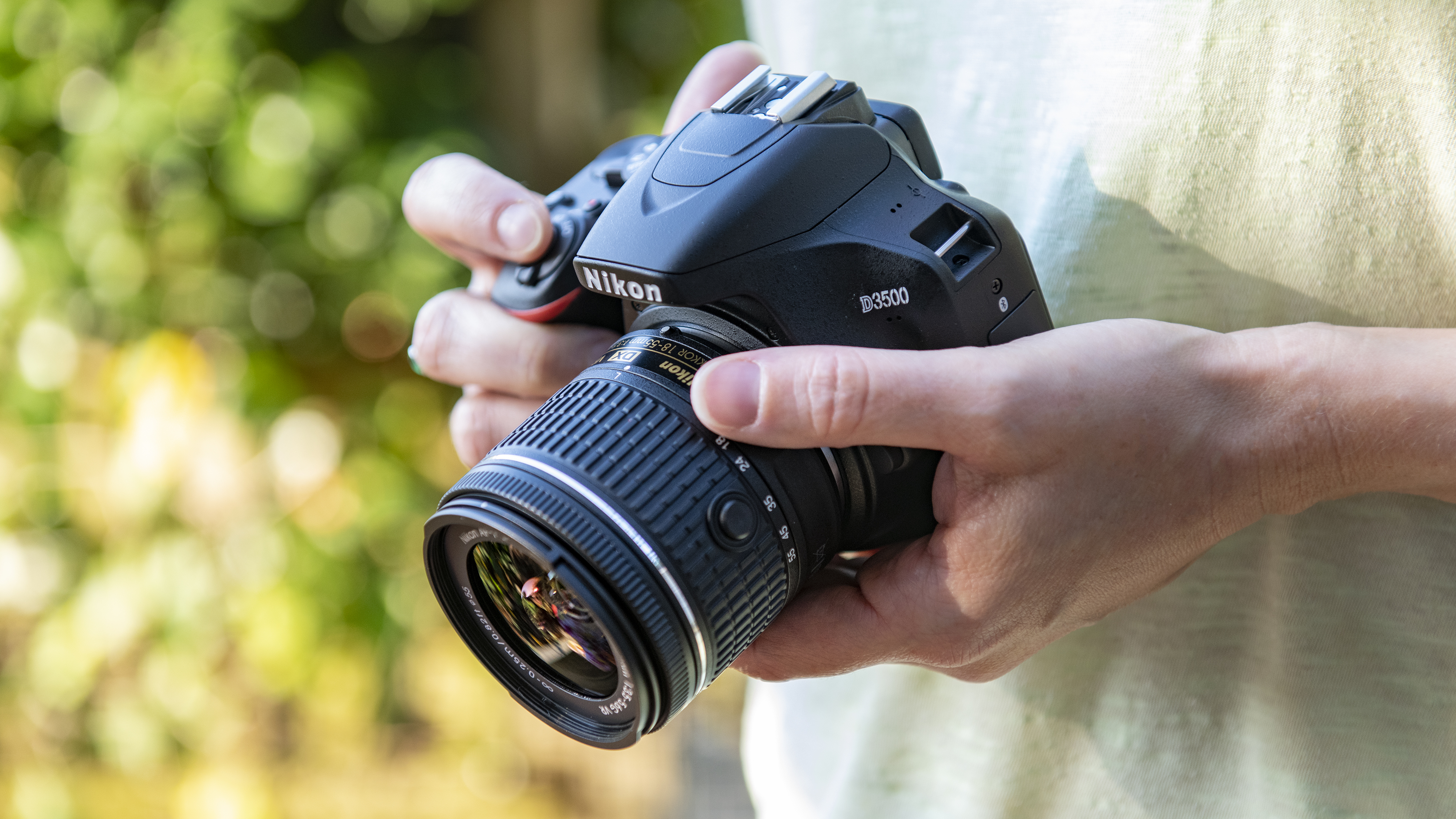
The Nikon D3500 is the simply DSLR in this list. Why? Well, these cameras – which differ from mirrorless rivals with their optical viewfinders – are slowly existence phased out by many of the leading camera manufacturers, in favor of more than advanced mirrorless models. But if photography is your main pursuit and video specs really aren't important, the Nikon D3500 is a fantastic, low-budget beginner camera selection. Housing a top quality 24.2MP APS-C sensor, the D3500 can capture detailed, tone-rich images.
At a glance it appears low on features, merely the Nikon D3500 includes a super handy dedicated Guide Manner that sits on its dial. Guide Fashion is a bones virtual photography tutor that volition walk you through all of the camera's functions, including in-camera photograph editing. It can be tailored to provide full assistance, or let for more than advanced control as you abound in confidence and feel.
There are two kit lenses available with the D3500, but nosotros recommend that you opt for the DX 18-55 VR kit lens. VR stands for Vibration Reduction and it costs a fraction more than the other option. But with VR stabilization enabled, y'all'll go better shots handheld, specially in depression-low-cal weather.
- Read our in-depth Nikon D3500 review

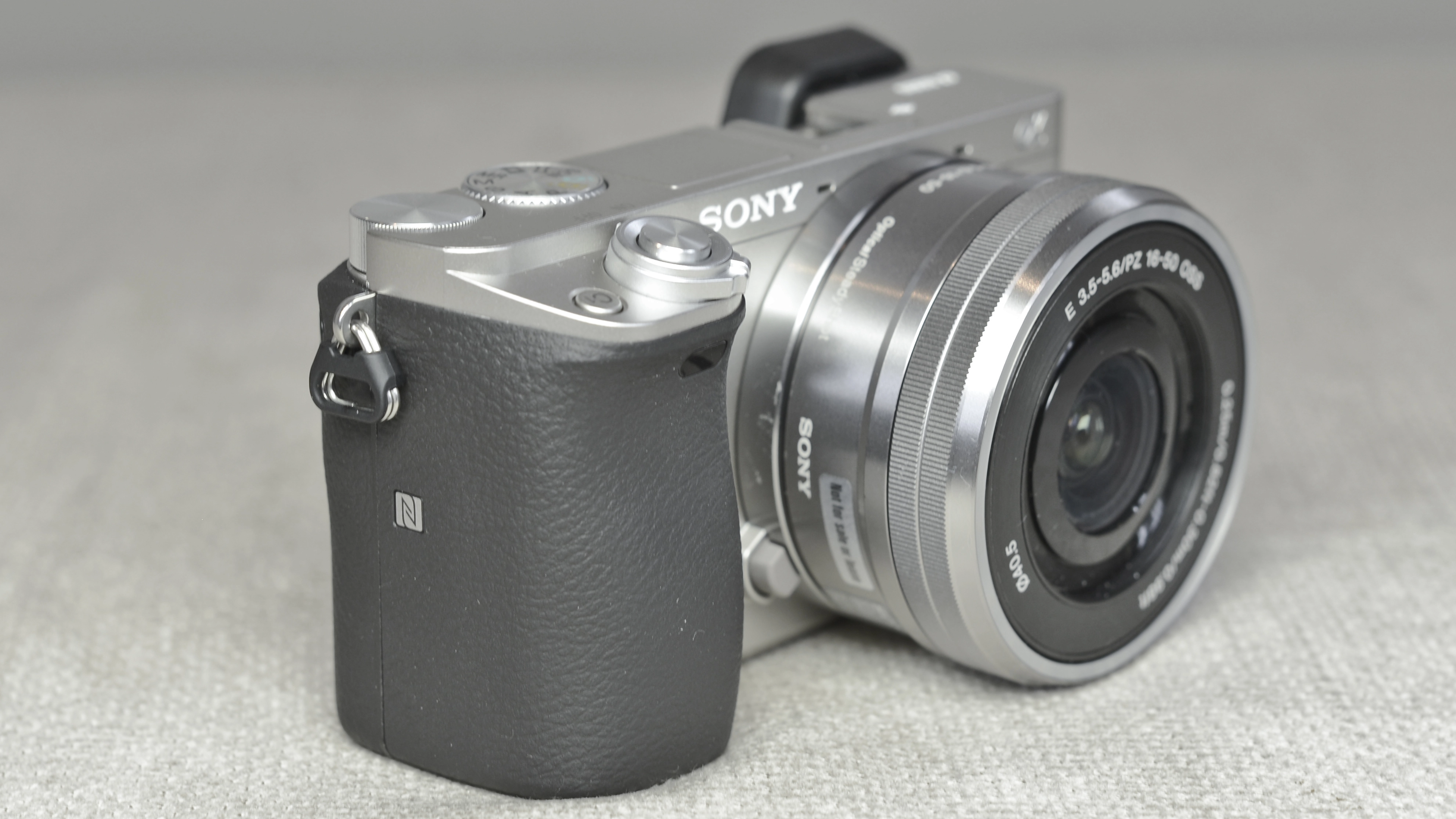
Despite being over five years old, the award-winning Sony A6000 still holds upward as a fantastic value choice for photography enthusiasts. Despite its compact size, the A6000 houses a superb 24.3MP APS-C sensor that can capture detailed photos at up to 11fps.
Its autofocusing arrangement, although dated, operates quickly and uses 179-points to track moving subjects. This combo makes it a practiced pick for people who are hoping to take pictures of wildlife, fast-moving family unit members (toddlers) and sports.
Most cameras at this size merely offer an LCD brandish, but Sony somehow managed to squeeze in an electronic viewfinder. This increases the A6000'due south usability when taking pictures on sunny days. Taking photos with the camera held up to your center also improves stability when taking pics of moving subjects. Unfortunately, the A6000 shows its age past lacking bear on functionality on its titling 921k-dot LCD screen.
I of the early criticisms of Sony Blastoff series cameras was that they lacked a broad plenty range of lenses. But a lot has changed since the A6000 was originally released. Now the A6000 can be paired with a plethora of high-quality lenses, made past Sony, also every bit third political party EF-mount lenses using Sigma's MC-11 adapter.
If photography is your focus and you lot are happy with only beingness able to record Total Hd 1080p, the Sony A6000 is a strong choice that has stood the exam of time.
- Read our in-depth Sony A6000 review

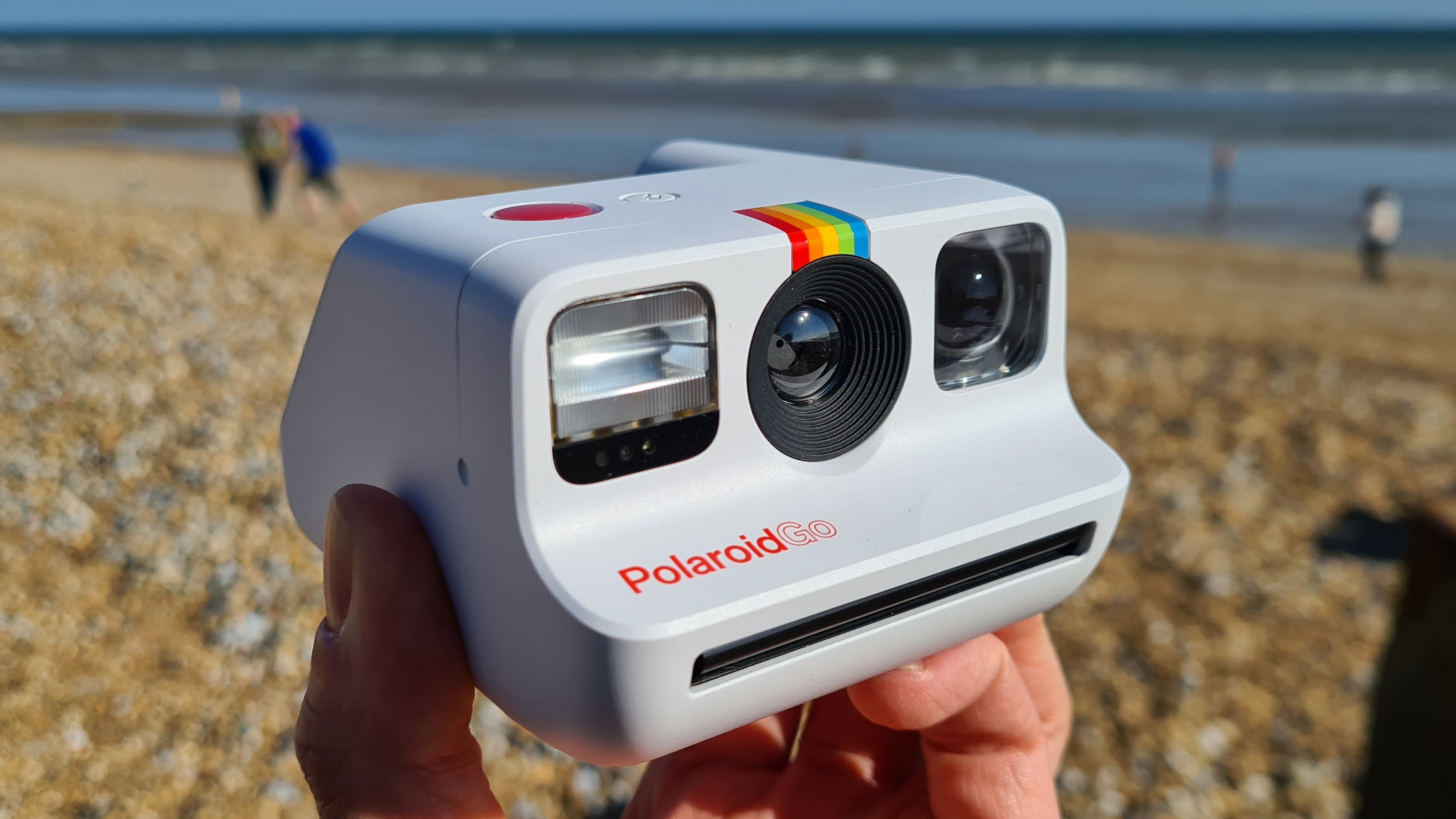
This might be a slightly odd option for the best beginner photographic camera, but if you're shopping for a child, or for for someone with a quirky outlook on life, it's worth a wait. The Polaroid Go is designed to produce quick and easy concrete snaps, with its small size making it more appealing than other instant camera models.
Using a new instant motion picture format, the Polaroid Get produces 67 x 54mm (2.6 x 2.1inch) prints with a square 47 x 46 mm (1.85 x i.8 inch) prototype area. Controls are limited, only this is a camera which is all about living in the moment and experimenting with composition, subjects, form and then on. As such, the lack of autofocus may be offputting for some, but you soon learn to work within the photographic camera's limits - another learning feel.
Equally you might expect, y'all're not going to get consistent results with a camera like this, but yous will become interesting, charming and unique shots that you are arguably more important than pin-sharp perfection from so-called "proper" cameras. It's a fantastic choice for anyone bully to experiment with counterpart photography, with the fuss, hassle and expense of more than avant-garde motion picture setups.
- Read our in-depth Polaroid Go review

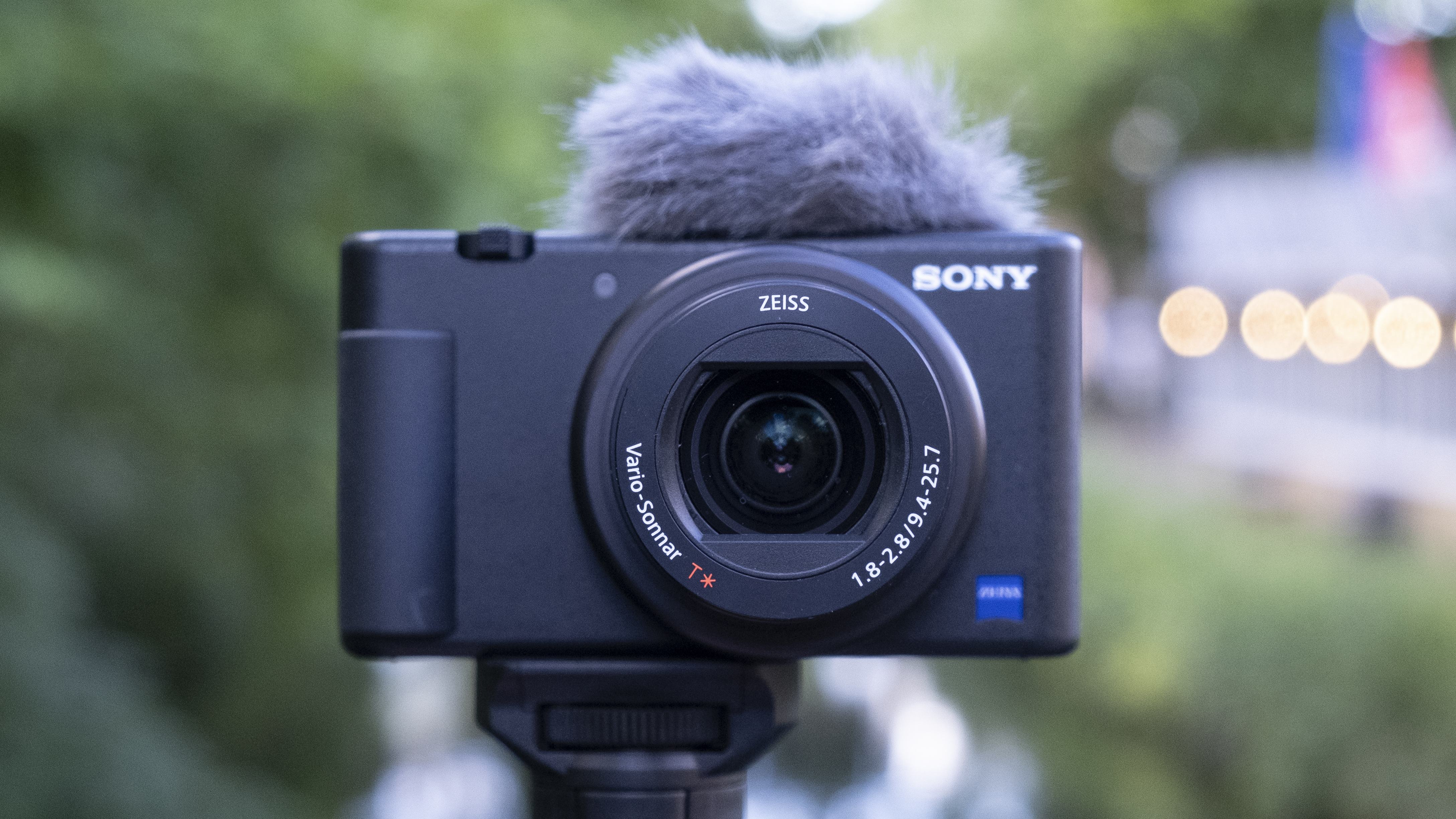
Focused well-nigh entirely on vlogging, the Sony ZV-1 is ane of the best meaty cameras for creating video. Its combination of a bright f/1.8-2.8 lens, intelligent AF and articulated screen make information technology a compelling selection for people who savour creating video content and desire to make a significant step upward from their smartphone.
Sony'south incredibly popular 20.1MP 1-inch sensor sits at the heart of the ZV-1, which ways information technology is also no slouch when it comes to capturing photos. Its stock-still lens has an equivalent focal length of 24-70mm, ensuring that the ZV-1 is suitable for capturing everything from mural scenes to portraits.
Its advanced focus tracking includes Centre AF, which does a fantastic job of locking onto faces and keeping everything in focus. And thanks to its 3.5mm mic input, you'll exist able to capture loftier quality audio easily with an external microphone. But if you don't want to spend extra, its congenital-in mic withal does a decent job (specially with the supplied wind-shield).
A complete beginner take a little while to suit to the ZV-one, due to its limited touchscreen functionality and slightly more than advanced video features. But the inclusion of things such every bit S-Log2, AF-sensitivity controls and a congenital-in ND filter volition exist a huge heave to people more familiar with video, or those who desire a vlogging companion that can abound with them for years to come.
- Read our in-depth Sony ZV-ane review

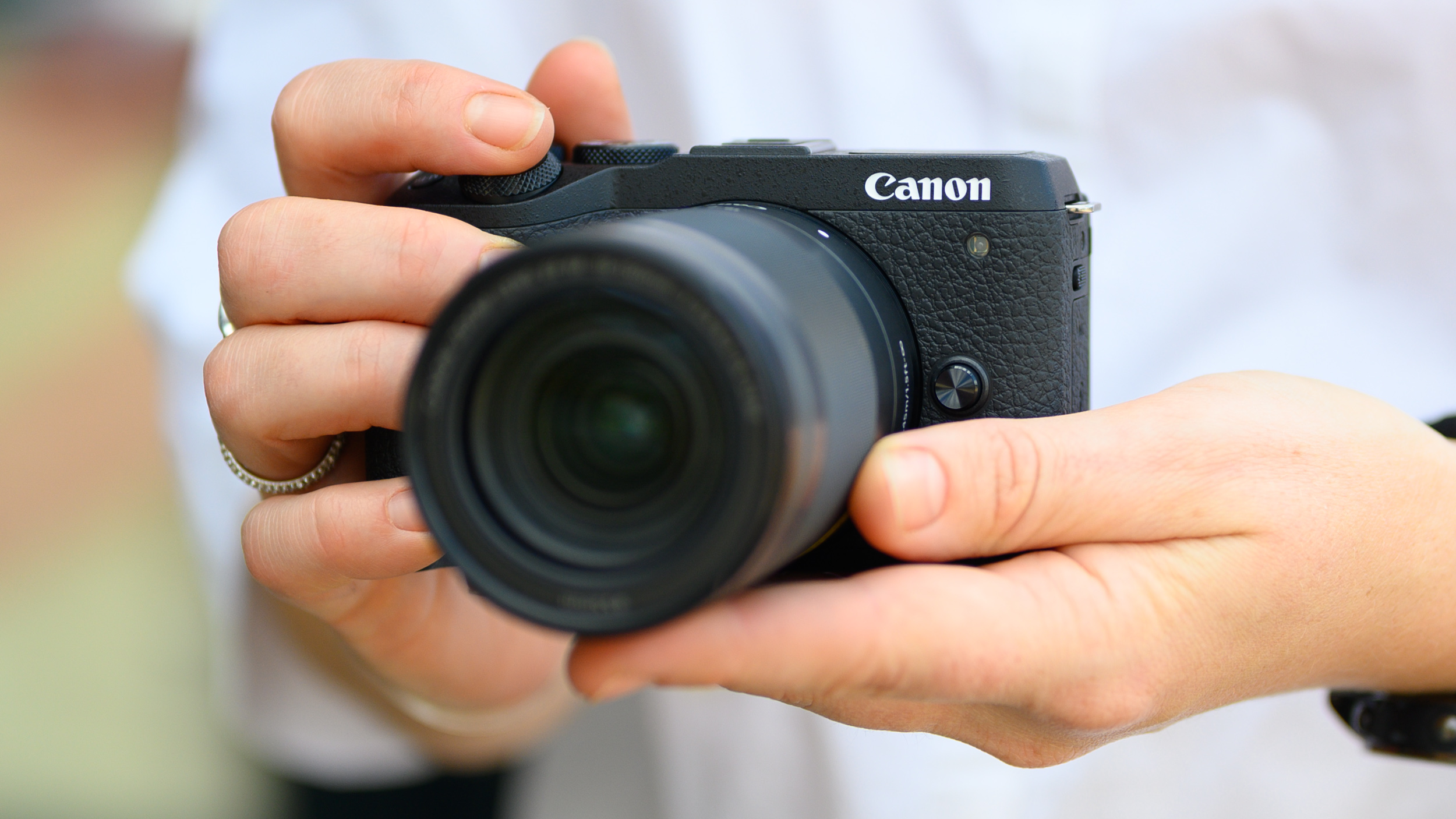
With a high-resolution sensor in a miniature body, Catechism'south EOS M6 Mark II is a powerful notwithstanding pocketable pick for beginners. It uses the aforementioned 32.5MP sensor as the 90D DSLR to produce excellent stills, with lovely detail and nifty colors. It'due south also great in the hand: despite its lightweight build, a good grip gives the M6 Mark 2 a sturdy feel, while well-placed buttons and dials make for like shooting fish in a barrel one-handed utilise. A viewfinder is optional, but the tilting touchscreen works perfectly fine for offset-timers, providing an feel similar to smartphone photography.
Autofocus is both reliable and speedy beyond 143 areas, as is 14fps burst shooting. The option to capture uncropped 4K footage is a welcome bonus, too. Less remarkable is the 305-shot battery life. The absence of image stabilization is also a shame, every bit is the limited native lens range. Nevertheless, there's a lot for beginners to like about the M6 Mark II. It's impressively portable without compromising on specs and features, forming a well-rounded package which – over two years after launch – is available at a price representing nifty value.
- Read our in-depth Canon EOS M6 Mark 2 review

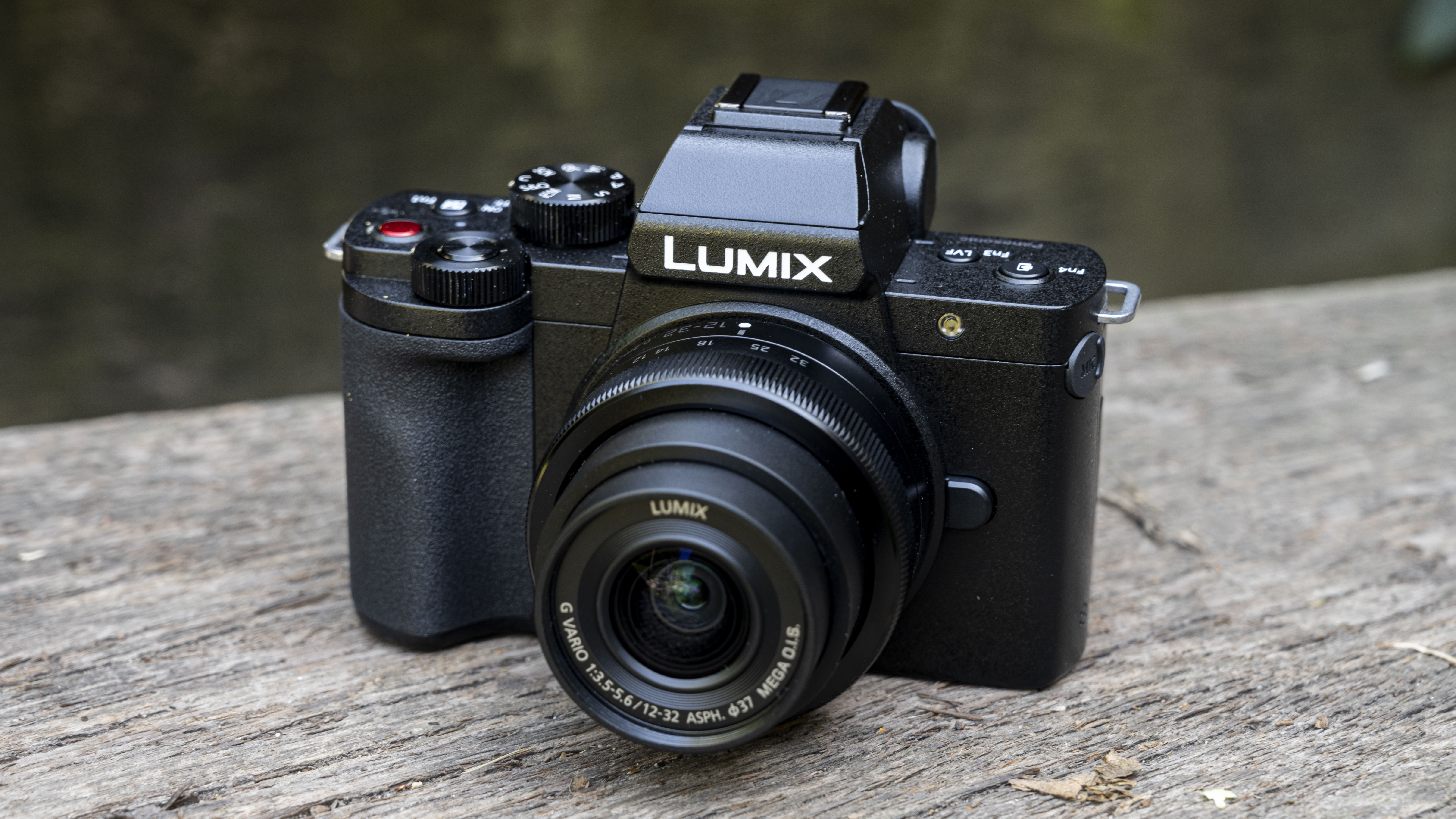
If you want a camera that is great for both vlogging and taking photos, the Lumix G100 is ane of the best two options available for you. The other option being the Sony ZV-1 (see below). But aside from the fact that its sensor is larger than Sony's 1-inch unit of measurement, there are other reasons to lean towards this Lumix.
Firstly, the Lumix G100 is the world'due south first camera to comprise OVO Audio technology, adult by Nokia. Using an intelligent combination of facial recognition software and its triple microphone array, the G100 tin can 'see' where the sound is coming from. The result is that information technology captures improve sounding sound than the competition, without the demand for any external microphones.
It'south also super compact, making it a great companion camera for travel and taking pictures on-the-get. As a Micro Iv Thirds sensor camera, information technology has access to a vast number of relatively affordable lenses, which are every bit meaty. The one downside of using a smaller sensor (compared to APS-C models, like the Fujifilm X-T200 higher up) is that it isn't quite every bit expert in low light. But it does offer five-axis hybrid image stabilization when paired with uniform lenses to go along pictures steady, and features a built-in flash too.
The G100 pairs easily to smartphones and is a perfect get-go photographic camera for someone who loves video and stills every bit. It'south as well suitable for families who want an piece of cake-to-use camera that practically does it all.
- Read our in-depth Panasonic Lumix G100 review

Alternatively...
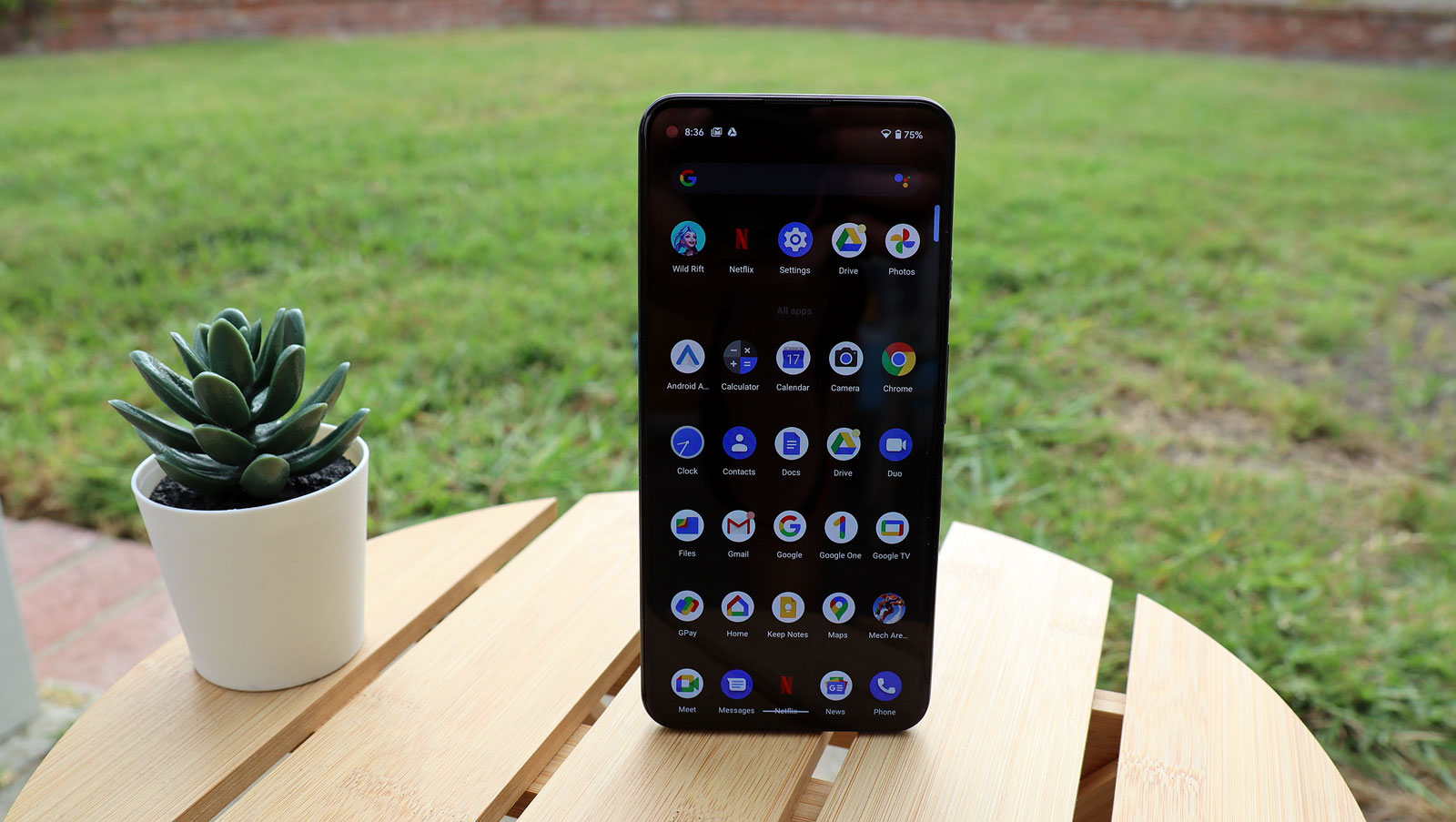
You probably weren't expecting to see a smartphone in this list, but hear us out. Often when people get disappointed with the snaps that their telephone captures, they don't need to replace it with a dedicated camera. That's where the Pixel 5a comes in.
Over the past few years, Google has perfected its smartphone photography algorithms. This has enabled them to develop camera modules that exceedingly out perform their on-paper specs. At merely 12.2MP, the Pixel 5a isn't a resolution beast. Only information technology does have a bright f/1.7 discontinuity lens and optical image stabilization, boosting its low-calorie-free credentials, alongside a 16MP ultra-wide camera. Every bit a smartphone, the Google camera relies on artificial intelligence to identify image content and apply the best settings and processing for every given situation. This takes the thinking out of information technology and keeps you entirely focused on taking pictures, which may or may non be what y'all desire.
If y'all already accept a phone that you'd like to keep and want to get the Pixel 5a as your dedicated continued camera, yous can pick it up SIM-gratuitous. Even if yous don't add a data plan, yous still go Bluetooth, Wi-Fi and NFC connectivity, plus all of the usual camera functionality beyond the likes of Google Lens, which uses cellular data.
You besides get access to all the editing and social media apps you dearest, as well equally a large Full Hd and OLED display to enjoy your content on. Plus with 128GB of born storage (something we'd similar to see more of on defended cameras), there'southward no need for memory cards either.
- Read or in-depth Google Pixel 5a review

How to cull the all-time beginner camera for you lot
Need a bit more of a steer on where to start? Hither are 5 things to look for when choosing a beginner camera:
1) Resolution
Referred to as "megapixels" or "MP", resolution indicates the maximum size of images that a camera can capture. The higher the number, the college the resolution. For this reason, a lot of camera brands employ megapixels to concenter customers, but resolution isn't the whole story. 12MP is more plenty to produce a high quality print at A3 newspaper size.
ii) Design and build
As the cliché goes, the best camera is the one you have with you – which ways there's no point in ownership i that you don't want to take out and utilise frequently. Perhaps you want a larger camera with physical controls. Or maybe a smaller camera with a touchscreen would make you feel more at home.
3) Sensor size
Not all sensors are created equal. Different megapixel counts, the larger the sensor, the better the image quality – generally speaking. Smaller sensors aren't as skillful at gathering light, which means more dissonance (image grain) will bear witness up in images captured in low-lite. Larger sensors typically produce more attractive tones and depth.
iv) Connectivity
All of the best beginner cameras offer some way to connect to your smart device or favorite social media apps. The cameras in this list all benefit from Wi-Fi, Bluetooth or NFC connectivity, or a combination of all three.
5) Lenses
A decent quality lens is critical for capturing adept images. All of the best beginner cameras come with a kit or fixed lens, which offer a standard focal length (zoom range). Interchangeable lens cameras come with kit lenses, which can exist changed to adjust your needs. Fixed lens cameras appeal to people who don't desire to carry extra lenses.
What is the easiest camera for beginners?
As you lot'll see in the listing in a higher place, at that place's no single right answer when information technology comes to which photographic camera is easiest for beginners. Much will depend on what type of technology yous're already familiar with, as well as how you like to shoot. Some learners like the certainty of physical buttons, for case, while smartphone users might prefer a camera with a touchscreen interface. Luckily, at that place are plenty of both styles available – and the best beginner cameras tend to offer a combination of control systems, like the Fujifilm Ten-T200.
DSLR cameras are often easy cameras for beginners to use and conform to. Considering they are bigger than most compact and mirrorless models, there's more space to spread out buttons on the body (and to characterization them for ease of understanding). Plus DSLR cameras tend to characteristic large, sculpted grips for more than comfortable handling, which is important if you're planning to get a lot of exercise in. Have a look at the Nikon D3500, for example.
Equally, some beginners will find that a smaller camera is easier to get to grips with. Even if you're only but starting to have photography more than seriously, there'due south a good chance you might have used a point-and-shoot meaty camera at some betoken in your life. If and so, you might find that a premium compact like the Sony ZV-1 provides a familiar experience. And because there are no interchangeable lenses to worry well-nigh, you can focus on improving other aspects of your photography, such as framing.
How we test beginner cameras
While most of the cameras in this list are relatively affordable compared to the latest professional person mirrorless models, they're still a big investment – so every camera in this listing have been tested extensively by us to make sure information technology deserves its spot. For this particular guide, nosotros've besides approached the cameras from the indicate of view of someone starting out in photography or filmmaking, taking into account user interfaces, handling and general ease of apply.
The latter are particularly of import factors for starter cameras, only we've tested all the fundamentals too, so yous tin can exist certain each model has the capacity to grow with you. These days, real-world tests are the most revealing way to empathise a camera's functioning and character, so we focus heavily on those, along with standardized tests for factors similar ISO performance.
Subsequently testing the camera's showtime-upwardly speed, we'll move onto functioning. We apply a formatted SD card and shoot in both JPEG and raw (if available). For burst shooting tests, we dial in our regular test settings (1/250 sec, ISO 200, continuous AF) and shoot a series of frames in forepart of a stopwatch to meet if it lives upward to its claimed speeds. We'll likewise look at how quickly the buffers clears and repeat the test for both raw and JPEG files.
Where applicable, we likewise examination the photographic camera's different autofocus modes in different lighting weather condition (including Face up and Eye AF) in single betoken, area and continuous modes. Nosotros also shoot a range of photos of different styles (portrait, landscape, low light, macro/close-upwards) in raw and JPEG to get a sense of metering and its sensor'due south ability to handle noise and resolve fine particular.
If the camera's raw files are supported past Adobe Camera Raw, we'll too process some test images to come across how we tin can button areas like shadow recovery. And nosotros'll also exam its ISO operation across the whole range to get a sense of the levels we'd exist happy to button the photographic camera to.
Bombardment life is tested in a real-world manner, as we utilise the camera over the grade of the solar day with the screen set to the default settings. One time the battery has reached zero, nosotros'll and so count the number of shots to see how information technology compares to the camera'south CIPA rating. Finally, we test the camera'due south video skills (where necessary) by shooting some exam footage at different frame rates and resolutions, along with its companion app.
We and so have everything nosotros've learned most the camera and factor in its price to become a sense of the value-for-money it offers, before reaching our concluding verdict.
- All-time cameras for photography
- Best beginner DSLR cameras
- Best cameras for kids
- All-time DSLR
- All-time mirrorless camera
- Best 4K camera
- Best full-frame camera
- All-time compact photographic camera
- Mirrorless vs DSLR: x key differences
- Camera rumors
- Best digital photo frame
- Best photo books
- Personalized photo gifts
Source: https://www.techradar.com/best/best-camera-for-beginners
Posted by: brucesiderear.blogspot.com

0 Response to "What Is A Good Starter Camera For Photography"
Post a Comment